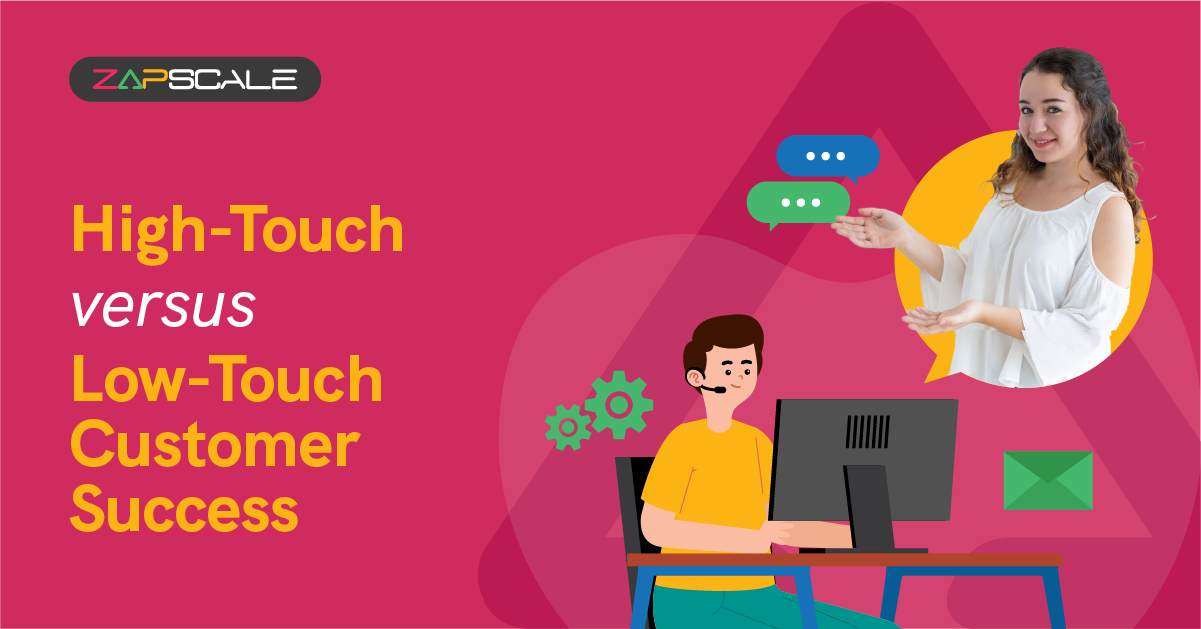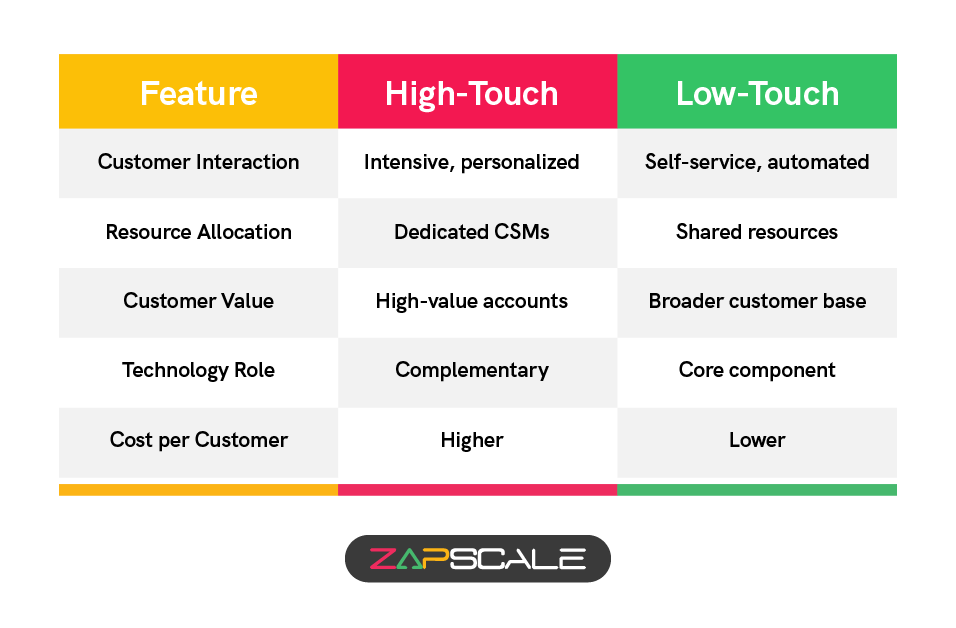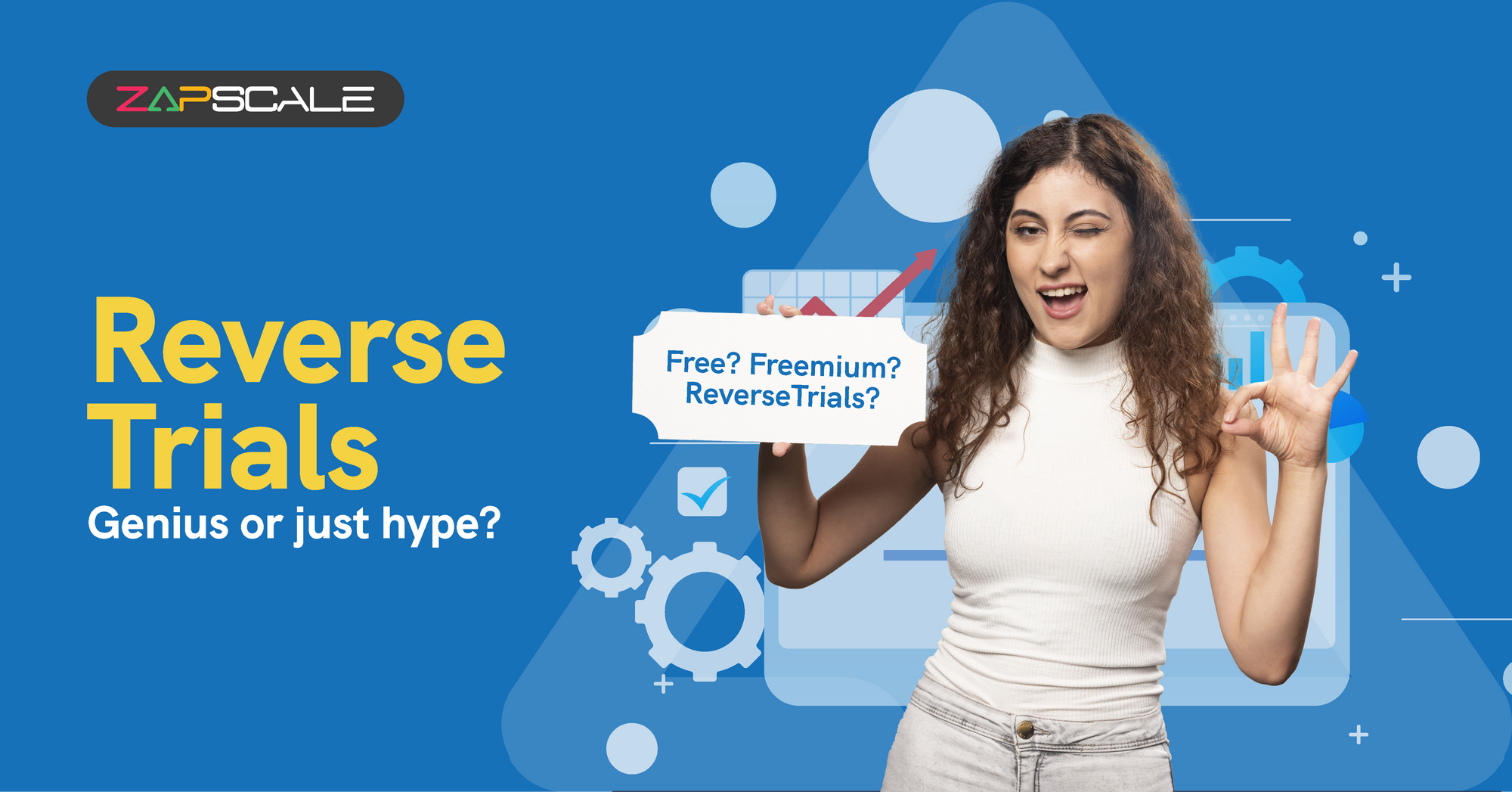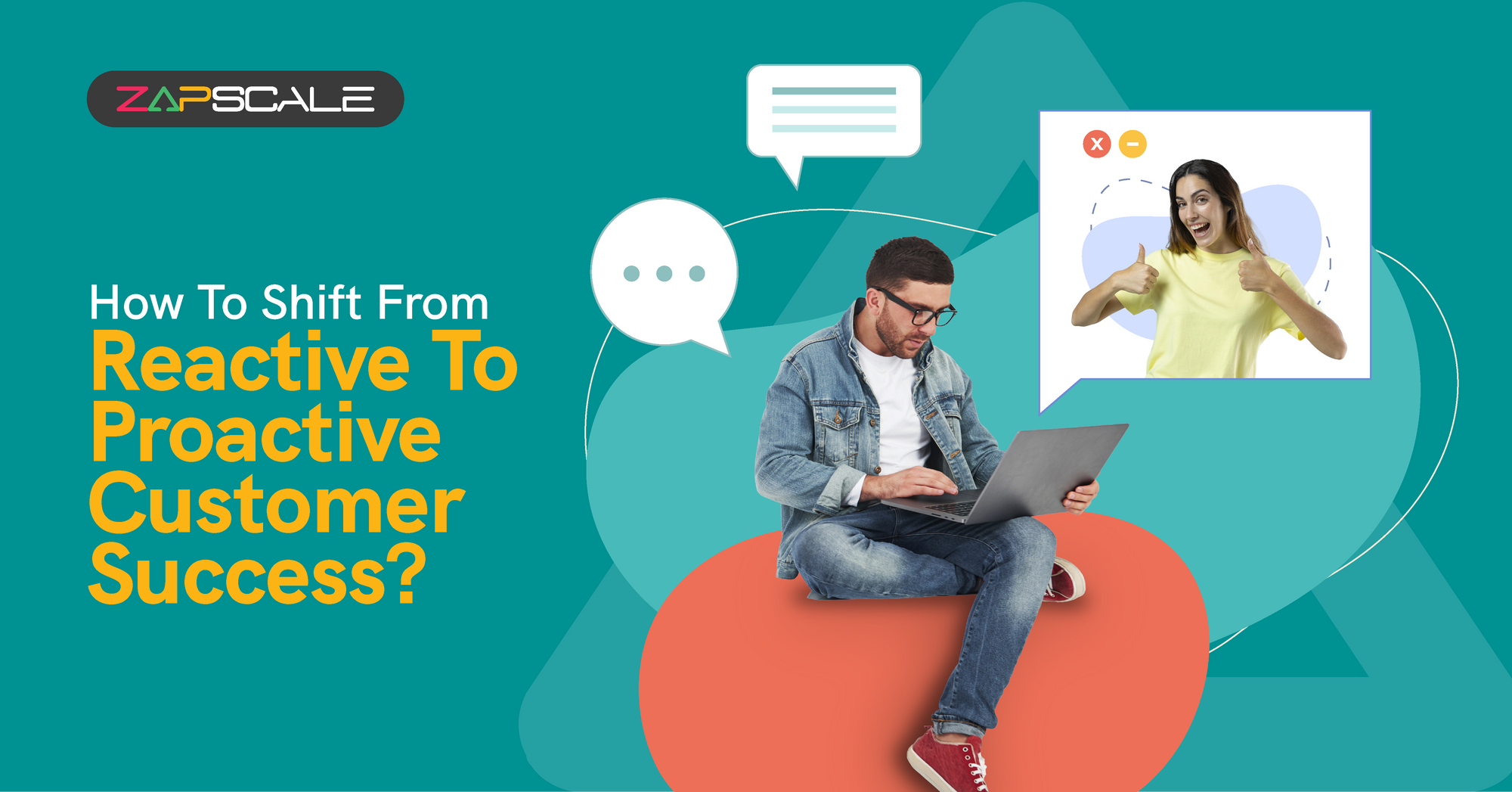CATEGORY > Customer Success Management
Which Model is Right for You High or Low Touch

Let's dive into the nuances of high-touch and low-touch customer success models to understand which approach best suits your business.
We'll explore their core differences, ideal use cases, and how to potentially combine them for optimal results.
Ready to optimize your customer success strategy? Let's get started.
Mastering The High-Touch Customer Success Model
In today's competitive landscape, customer retention is the lifeblood of any SaaS business.
Traditional customer success models often fall short of creating the deep, lasting relationships needed to secure long-term loyalty. This is where the high-touch customer success model enters the scene.
High-touch customer success caters to your most valuable customers, offering a personalized approach that fosters trust and drives growth.
We explored the fundamental differences between high-touch and low-touch models in our previous blog post.
Now, let's delve deeper and explore how to master this strategic approach.
1. Building The Perfect High-Touch Strategy
a. Targeted Customer Segmentation
Identify your high-value customers based on factors like revenue potential, industry, or product usage. These customers warrant dedicated attention and personalized support.
b. Dedicated CSMs
Assign highly skilled CSMs to each high-touch account.
CSMs should be equipped with in-depth industry knowledge and a deep understanding of your product. They become trusted advisors, proactively addressing customer needs and anticipating challenges.
c. Strategic Partnerships
Go beyond transactional interactions. Cultivate long-term partnerships with key decision-makers at your high-value accounts. Regular communication and a shared vision for success are critical in this model.
d. Proactive Engagement
Don't wait for issues to arise.
Proactive CSMs anticipate customer needs and offer solutions before problems escalate. This could involve regular business reviews, personalized success plans, or early identification of potential roadblocks.
e. Metrics That Matter
Measure the success of your high-touch model with relevant metrics. Track metrics like customer lifetime value (CLTV), expansion revenue, and customer satisfaction (CSAT/NPS) to demonstrate the return on investment (ROI) of personalized support.
2. Unlocking The Power of High-Touch
a. Increased Customer Satisfaction
Building strong relationships leads to happier customers, resulting in higher customer satisfaction and loyalty.
b. Reduced Churn
Proactive engagement and personalized support can significantly reduce churn rates.

c. Enhanced Customer Lifetime Value
High-touch customers are more likely to expand their usage and become long-term advocates, increasing your CLTV.
d. Strategic Insights
Deep customer engagement provides valuable insights into customer needs and challenges, fueling product development and strategic decision-making.
3. Challenges And Considerations
a. Resource Allocation
High-touch models require dedicated resources and a skilled workforce. Balancing this with scalability for future growth is essential.
b. Data-Driven Decisions
Leverage technology and data analytics to measure ROI and optimize resource allocation within your high-touch strategy.
c. Scalability Strategies
Consider scalable elements like tiered support models or self-service resources to support overall customer success efforts.
By mastering the high-touch customer success model, you cultivate loyal, high-value customers who are vital to your long-term success.
It demands a strategic approach, dedicated resources, and a commitment to building trust-based relationships.
Remember, the high-touch model is an investment that yields significant returns in customer satisfaction, loyalty, and sustainable growth.
Low-Touch Customer Success: Scaling Success Efficiently
Low-touch customer success is essential for businesses that balance personalized support with scalability.
By leveraging technology and self-service resources, companies can effectively manage a larger customer base while maintaining high satisfaction levels.
1. Core Components Of Low-Touch Customer Success
- Comprehensive knowledge bases, FAQs, and online tutorials empower customers to find solutions independently.
- Utilize technology to streamline routine tasks, such as onboarding, issue resolution, and renewal reminders.
- Identify customer segments with similar needs and develop tailored self-service resources.
- Foster a customer community where users can share knowledge and support each other.
- Use data analytics to identify at-risk customers and provide targeted support.
2. Challenges And Opportunities
While low-touch customer success offers numerous benefits, it also presents challenges.
Striking the right balance between automation and human interaction is crucial.
Additionally, ensuring the quality and effectiveness of self-service resources is essential for customer satisfaction.
Despite these challenges, low-touch customer success presents significant opportunities for scaling customer support, reducing costs, and improving efficiency.
By combining automation with targeted human intervention, businesses can achieve high levels of customer satisfaction while optimizing resource allocation.
3. Key Metrics For Low-Touch Success
To measure the effectiveness of a low-touch customer success model, focus on the following metrics:
a. Self-Service Adoption
Track the percentage of customers utilizing self-service resources.
b. Deflection Rate
Measure the number of customer issues resolved without agent intervention.
c. Customer Satisfaction
Monitor customer feedback to gauge overall satisfaction with the self-service experience.
d. Time To Resolution
Track the average time it takes customers to resolve issues independently.
e. Customer Engagement
Measure customer activity within the self-service platform.
By carefully analyzing these metrics, businesses can identify areas for improvement and optimize their low-touch customer success strategy.
Key Differences Between High-Touch And Low-Touch Customer Success Models
1. Interaction Level
High-Touch: This model emphasizes frequent, personalized interactions, where customer success managers actively engage with clients to provide tailored support and guidance.
Low-Touch: This approach focuses on automation and self-service, allowing customers to find solutions and assistance independently through digital tools and resources.
2. Resource Allocation
High-Touch: Requires a significant investment of human resources and time, as it involves direct communication and relationship-building with clients.
Low-Touch: Leverages technological solutions, reducing the need for extensive human involvement, and making use of automated systems and scalable processes.
3. Customer Needs
High-Touch: Best suited for complex products and high-value clients who require detailed guidance and support. This model caters to customers with unique needs and expectations.
Low-Touch: Ideal for simpler products and a wider customer base, offering efficient support to a larger number of clients without the need for intensive personal interaction.
4. Scalability
High-Touch: While less scalable due to its resource-intensive nature, the high-touch model excels in delivering personalized support.
It's ideal for high-value clients where deep relationships and tailored strategies are crucial, though it requires careful resource allocation to manage growth.
Low-Touch: Naturally more scalable, making it a perfect fit for businesses looking to expand quickly. This model can efficiently handle increased customer volumes without a proportional increase in resources.
Traits Of The High-touch & Low-touch Customer Success

Balancing High-Touch And Low-Touch For Optimal Success
The choice between high-touch and low-touch customer success is not mutually exclusive. Many organizations successfully adopt a hybrid approach that combines the strengths of both models.
Choosing the ideal customer success model for your product involves evaluating several key factors:
1. Product Complexity
If your product is highly complex, a high-touch or hybrid approach may be beneficial. This allows for personalized support and guidance to help customers navigate intricate features and functionalities.
2. Customer Base Size
For large and diverse customer bases, a low-touch strategy can be more effective. This approach relies on scalable solutions, such as automation and self-service, to efficiently support a wide array of customers.
3. Price Point
Higher-priced products often justify the investment in a high-touch customer success model. Providing dedicated support can enhance customer satisfaction and justify the premium pricing.
4. Customer Needs And Expectations
Understanding your customers' specific needs and expectations is crucial in selecting the appropriate model. Tailoring your approach to meet these requirements can lead to improved customer experiences and outcomes.
Conclusion
The ultimate goal is to maximize customer lifetime value by ensuring customers achieve their desired outcomes with your product.
By carefully considering these factors, you can determine the most effective customer success approach, thereby enhancing overall customer satisfaction and retention.
ABOUT THE AUTHOR
Popular from Customer Success Management
Quality Content,
Straight To Your Inbox!
Subscribe for the latest blogs, podcasts, webinars, and events!

Write a Blog
If you have experience in CS and
a flair for writing, we’d love to
feature you.
Write to us on
hello@zapscale.com





